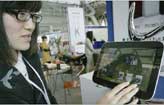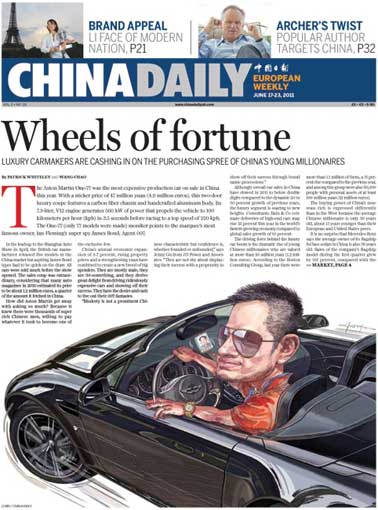View
Craving face time
Updated: 2011-06-19 07:45
(New York Times)

The benefits and downside of social media are part of the modern conversation. Cellphone videos posted to YouTube and Facebook can show footage of what appears to be Syrian citizens who were shot by soldiers dispatched by President Bashar al-Assad. Twitter feeds can amplify that message, when no reporter is on the ground to bear witness, walk with the protesters and hear their laments. They enable those brave enough to confront a despotic regime to broadcast their struggle to the world.
Meanwhile, the most obvious drawback of social media, Bill Keller wrote in The Times, is that they are "aggressive distractions." "Twitter is not just an ambient presence," he wrote. "It is the enemy of contemplation. Every time my TweetDeck shoots a new tweet to my desktop, I experience a little dopamine spritz that takes me away from �?from �?wait, what was I saying?"
Add to the list of drawbacks the fact that you can't interview a Twitter feed and see if it is telling the truth.
As more of our time is spent living in the virtual world, less is spent in the presence of others, having old-fashioned conversations. An online service called Grubwithus brings strangers together to share a meal, The Times reported. Users browse a list of dinners in their cities, buy a ticket for around $25 and then meet up with a group to dine. Academics who study socializing say that these interactions appear to satisfy a basic need: the intimacy of face-to-face meetings.
People worry that "online contact and networking might replace offline interactions, but offline is still so precious that we're creating ways to bring offline even more front and center," S. Shyam Sundar, a director of the Media Effects Research Lab at Pennsylvania State University, told The Times. "Physical proximity plays a big role in terms of building relationships."
Even the proliferation of online videoconferencing falls short of the handshake and the sitdown when it comes time to cut a deal.
Thomas Lewis, an assistant clinical professor at the University of California, San Francisco School of Medicine and a practicing psychiatrist, told The Times that using video chats to treat patients is better than doing it over the phone. But the camera on a desktop is at the top of the screen, and if you actually look directly at your video partner, it appears that you are looking down, he said. Eye contact is lost.
"When someone doesn't look us in the eye, the brain deduces this as someone being less likable, less confident and less honest," Dr. Lewis told The Times. "This is problematic in trying to create business relationships."
Another lesson many in the business world have learned is that leaving a trail of electronic messages about sensitive subjects can lead to problems later on. "LTL" (let's talk later) is a signal to colleagues that it's time to set aside the keyboard and find a place to have a free and frank exchange of ideas, without creating a digital trail.
Mr. Sundar told The Times that a new generation of services that rely on the ubiquity of social networking are being put to use to overcome the limitations of the digital realm and bring people together in what is known, in Webspeak, as IRL, or "in real life." It's also sometimes referred to as the real world.
He added: "We're using social technology to feed our need to meet up and close the gap between all the social networking that we do from a distance."
Tom Brady
E-paper

Pret-a-design
China is taking bigger strides to become a force in fashion.
Lasting Spirit
Running with the Beijingers
A twist in the tale
Specials

Mom’s the word
Italian expat struggles with learning English and experiences the joys of motherhood again.

Lenovo's challenge
Computer maker takes on iconic brand apple with range of stylish, popular products

Big win
After winning her first major title, Chinese tennis star could be marketing ace for foreign brands
